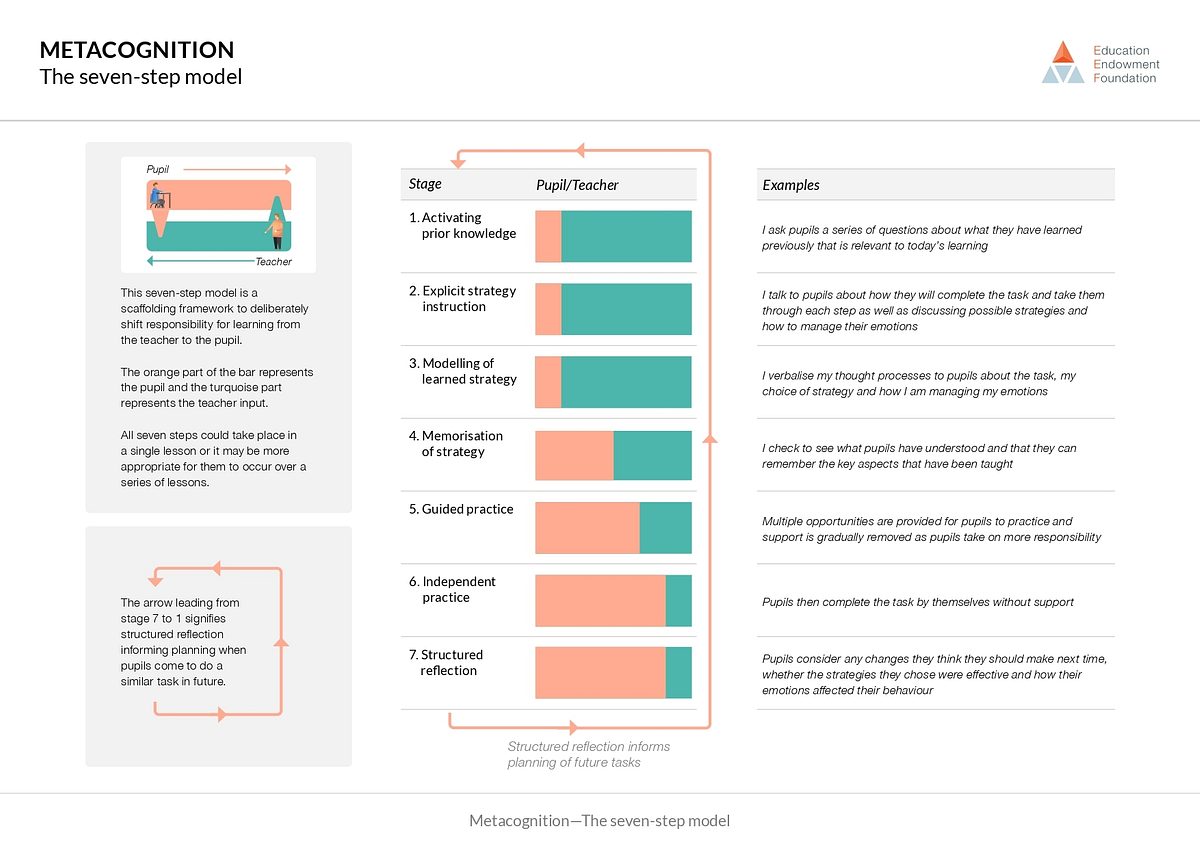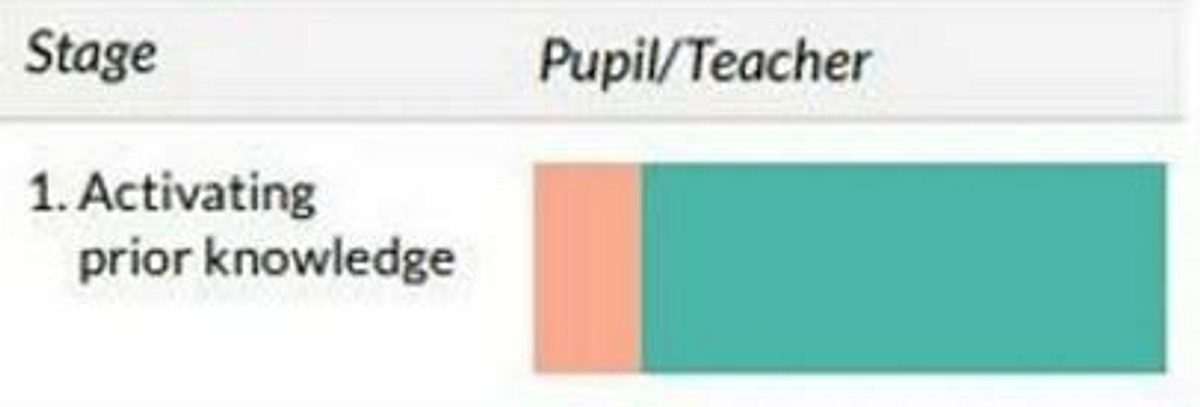
Blog -
Share on:

by Research Schools Network
on the
James Siddle and Karen Robinson of Lincolnshire Research School and Roisin Knight from Christ the King Catholic Voluntary Academy explore the new EEF guidance report on primary science.
Teaching primary science should be about fostering curiosity and critical thinking to enable our pupils to try and make sense of the world around them. Yet the concepts of the scientific world can often feel daunting to pupils and challenging to teach.
So how do teachers ensure that the curriculum is accessible to all pupils, enabling them to move from novice learners to expert scientific thinkers, especially for our most disadvantaged?
Recommendation 3 of the EEF’s new “improving Primary Science” guidance report highlights the need to explicitly teach pupils knowledge, skills and processes, enabling them to apply what they learn in practice, and allow opportunities for discussion and reflection.
The Seven-Step Model

The recommendation highlights the seven-step model from the metacognition and self-regulation guidance report as a ‘scaffolding framework to deliberately shift responsibility from the teacher to the pupil’. This model aims to support pupils to become self-sufficient, independent scientists.
What might this look like when developing primary science?
By looking at the first three stages of the model we can see how practitioners might consider their pedagogy to ensure they are addressing the needs of their particular cohort of students.
Stage 1 – Activating Prior Knowledge

During this stage, it is important to scaffold pupils’ thinking to make links back to prior learning, helping them make sense of new subject knowledge but also the processes involved in working scientifically.
For example, when teaching properties and changes of materials to Year 5, using a concept cartoon could be helpful. One in which characters disagree about whether whipped cream, eggs and rice are solids, liquids or gases could activate their prior knowledge from Year 4 work on states of matter, prompting discussions around which characters they agree with and why.

Stage 2 – Explicit Strategy Instruction
Pupils are introduced to new scientific knowledge, skills and vocabulary, building on what they already know, and any misconceptions are addressed.
For example, when classifying rocks in Year 3, explicitly teach the new terminology of igneous, sedimentary, and metamorphic. This can be achieved using a mixture of diagrams, videos and physical materials with magnifying glasses, as well as using a range of vocabulary strategies to explicitly embed new vocabulary. Pupils could then generate flashcards that use definitions and images, helping to address misconceptions around the vocabulary and generate a resource for self-testing. Depending on the content, we may also consider disciplinary knowledge: comparing and contrasting different types of inquiry or explicit teaching of using apparatus such as a thermometer or measuring tape.

Stage 3 – Modelling of the learned strategy
“I know that good scientists look at things carefully and make observations, so that is what we are going to do when we monitor the weather this term.
I also know that good scientists record their findings so they can spot patterns, so I need to think of a good way to do this. I could just write down the weather that I can see whenever I look out of the window but then I wouldn’t know when this weather happened, so I think I need to write it down with a date and time.
I’m going to create a chart which has the date but also a space for me to say what the weather was like next to it…”
The teacher models their thought processes at each step, for example through thinking aloud using metacognitive talk, and encouraging pupils to engage in a similar thought process.
For example, Year 1 are going to be monitoring any changes in the weather over the course of the autumn term, studying seasonal changes, and recording data on a chart. It is important to model the creation of the chart so the children can understand how to use it. When doing so we should clarify potential misconceptions – this is a great opportunity to use a think aloud.
Tackling Disadvantage
Using the seven-step model gives us a structure for both our pedagogical approaches to working scientifically and how we set-up independent pupil learning. This is important for all children, but particularly those who might struggle when working scientifically, and stand to benefit most from well-sequenced, scaffolded lessons.

Blog -

Blog -

Blog -
This website collects a number of cookies from its users for improving your overall experience of the site.Read more